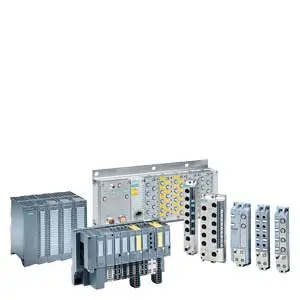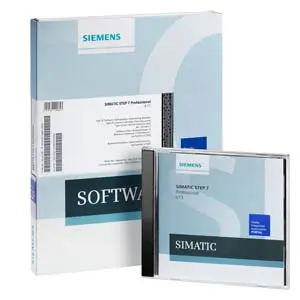SIMATIC controllers for cost-effective automation solutions
The right controller every time: for plant building, mechanical engineering, production or process engineering, small autonomous applications, as well as highly complex applications. Siemens offers the optimal control solution for every application area - whether PLC or PC-based.
The range encompasses logic modules including Basic, Advanced and Distributed Controllers, as well as Software Controllers.
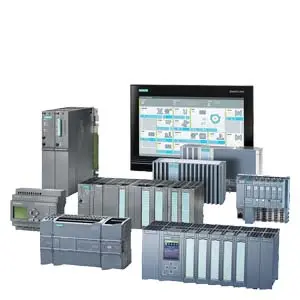
LOGO! logic module
Overview
- The compact, easy-to-use and low-cost solution for simple control tasks
- Compact, easy to operate, universally applicable without accessories
- "All in one": Integrated display and operator panel
- 43 different functions can be connected at the press of a button or by means of PC software; up to 400 times
- Functions are easy to change at the press of a button. No more time-consuming rewiring
- Building services/electrical installation sector (lights, blinds, awnings, gates, access control points, barriers, ventilation systems...).
- Control cabinet manufacture.
- Mechanical engineering (pumps, small presses, compressors, lifting platforms, conveyor belts ...).
- Special controls for conservatories, greenhouses.
- Signal preprocessing for other controllers.
- Standard versions.
- Pure versions, cost-optimized without key control panel and display.
- R: Relay output.
- C: Clock/time switch.
- E: Ethernet interface.
- o: without display.
- Key control panel and display in one device. Further tools are not required.
- Power failure-proof backup of switching program and setpoints (e.g. timers) due to integrated EEPROM.
- e.g. LOGO! 230RC: 72 x 90 x 55 mm (W x H x D).
- Adapted installation in the distributor box (same dimensions as ground-fault circuit interrupter).
- Expandability:
Expansion modules can be connected depending on the application.
- Expandability:
- Optional communications modules enable connection to KNX networks and Modbus RTU devices.
- LOGO! can also communicate with SIMATIC Controllers, SIMATIC Panels or Modbus TCP/IP devices
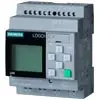
Application
The LOGO! logic module is the convenient, user-friendly solution for simple open-loop and closed-loop control tasks.
LOGO! can be implemented universally, e.g.:
The LOGO! logic modules can be flexibly expanded to suit the application
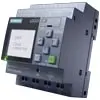
Design
LOGO! is available in different variants for different supply voltages (12 V DC, 24 V DC, 24 V AC, 115/230 V DC, 115/230 V AC):
The LOGO! version have the following distinguishing features:
LOGO! is simple:
LOGO! saves space:
LOGO! offers maximum flexibility and can be implemented universally:
LOGO! is communication-capable:
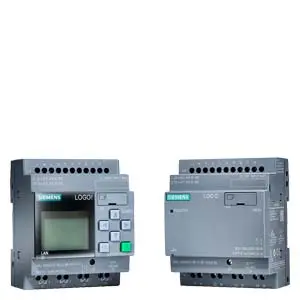
SIMATIC TDC multiprocessor control system |
Overview
SIMATIC TDC is a SIMATIC control system and covers the highest performance range. Its application area comprises
- Extremely fast response, computing and/or
- Closed-loop control with maximum precision (minimum sampling time: 100 µs)
The SIMATIC control system is freely configurable with STEP 7 and the engineering tools CFC and SFC. Configuring requires the block library of the D7-SYS add-on package.
The multi-processor automation system SIMATIC TDC (Rack Based) has been specially designed for complex closed-loop control and computing tasks in plant construction and offers computing power almost without limits.
Write one or two paragraphs describing your product or services. To be successful your content needs to be useful to your readers.
Start with the customer – find out what they want and give it to them.
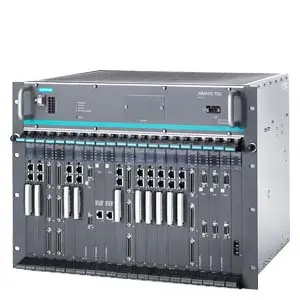
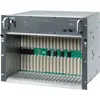
I/O systems |
Overview
SIMATIC ET 200 offers the right solution for every application
With SIMATIC ET 200 a wide range of distributed I/O systems is available - for solutions in the control cabinet or without a control cabinet directly at the machine, as well as for applications in hazardous areas. The modular design makes it possible to scale and expand the ET 200 systems simply and in small stages. Already integrated add-on modules reduce costs and at the same time offer a widely diverse range of possible applications. You can choose from many different combination options: digital and analog inputs/outputs, intelligent modules with CPU functionality, safety engineering, motor starters, pneumatic devices, frequency converters, as well as various different technology modules (e.g. for counting, positioning).
Communication over PROFINET and PROFIBUS, uniform engineering, transparent diagnostic possibilities as well as optimal interfacing to SIMATIC Controllers and HMI units prove the unique integration of Totally Integrated Automation.
MultiFieldbus
With the MultiFieldbus you can easily and flexibly use different fieldbus systems with SIMATIC ET 200. Due to support of the PROFINET, EtherNet/IP and Modbus/TCP protocols, the MultiFieldbus is designed for use on a wide range of Ethernet controllers.
PROFINET
PROFINET is the open, cross-vendor Industrial Ethernet standard (IEC 61158/61784) for automation.
Based on Industrial Ethernet, PROFINET enables direct communication between field devices (IO devices) and controllers (IO Controllers), up to and including the solution of isochronous drive controls for Motion Control applications.
As PROFINET is based on Standard Ethernet according to IEEE 802.3, any devices from the field level to the management level can be connected.
In this way, PROFINET enables system-wide communication, supports plant-wide engineering and applies IT standards, such as web server or FTP, right down to field level. Tried and tested fieldbus systems, such as PROFIBUS or AS-Interface, can be easily integrated without any modification to the existing devices.
PROFIBUS
PROFIBUS is the international standard (IEC 61158/61784) for the field level. It is the only fieldbus to allow communication both in manufacturing applications and in process-oriented applications.
PROFIBUS is used to connect field devices, e.g. distributed I/O devices or drives, to automation systems such as SIMATIC S7, SIMOTION, SINUMERIK, or PCs.
PROFIBUS is standardized in accordance with IEC 61158 and is a high-performance, open and rugged fieldbus system with short response times. PROFIBUS is available in different forms for various applications.
PROFIBUS DP (distributed I/O)
PROFIBUS DP is used for connecting distributed field devices, e.g. SIMATIC ET 200, or drives with extremely fast response times. PROFIBUS DP is used when sensors/actuators are distributed at the machine or in the plant (e.g. field level).
AS-Interface
AS-Interface is the international standard (IEC 62026/EN 50295) which, as an alternative to the cable harness, links especially cost-effective sensors and actuators for the field level by means of a two-wire line. This two-wire line is also used to supply the individual stations with power. This makes the AS-Interface the ideal partner for PROFINET and PROFIBUS DP. AS-i communications modules in ET 200SP enable the flexible combination of AS-Interface and distributed I/O. AS-Interface transmits standard data and safety data up to PL e / SIL 3 in the same AS-i network. AS-Interface is not only suitable for efficient transmission of digital and analog standard I/O signals but also ideal for the user-friendly connection of EMERGENCY STOP buttons and protective doors.
IO-Link
The communication standard IO-Link permits the intelligent connection of sensors and switchgear to the control level. IO-Link facilitates the integration of all components in the control cabinet and on the field level - for maximum integration and seamless communication on the final meters to the process.
IO-Link solutions from Siemens ensure maximum precision and cost-effectiveness in any production system. IO-Link is completely integrated in Totally Integrated Automation (TIA) and offers many advantages.
- The open standard permits the networking of devices from different manufacturers
- Simple wiring facilitates the installation process
- Reduced wiring effort saves time and money during installation
- Efficient engineering facilitates configuration and commissioning
- High-speed diagnostics ensures short plant standstill times and high plant availability
- High process transparency permits, for example, efficient energy management
